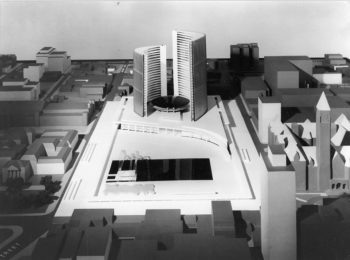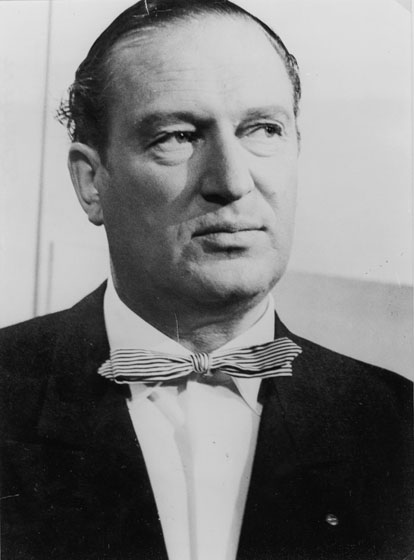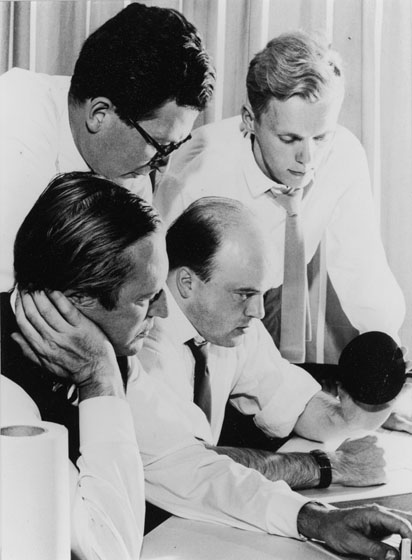

Only a few hours elapsed between the completion of the jury’s report to Professor Arthur and the announcement to the press of results in the final stage of the competition (even before City Council had a chance to ratify same). The date was Friday, September 26, 1958, and the United States had just launched ‘a satellite that may help to solve many of the mysteries of the earth’s weather,’ but that story was almost driven off the front page of the (now defunct) Telegram. Nearly all of it was given over instead to the remarkable prize-winning design. Popular and official reaction were generally favourable; Mayor Nathan Phillips was elated and called the design ‘breath-taking.’ The architectural profession was complimentary: John C. Parkin—himself a disappointed competitor in the preliminary competition but eventually associated in the execution of the building—was especially generous. The front page also carried the first story about the gentlemanly architect who headed the successful team from Finland.

Born in 1910 at Vaasa, a town on the west coast of Finland, Viljo Revell was a rugged-looking man, fond of the sea and sailing. He studied architecture at the Institute of Technology in Helsinki and opened his practice there in 1935 but twice in the same decade served as assistant to the renowned Finnish architect Alvar Aalto. Though he always remained a loyal admirer of Aalto, Revell led the modern nationalist school that developed in Finland after World War II in reaction to the older man’s more romantic and personal style. A biographer wrote that Revell was ‘a name which signifies not only a person, but also a group and a movement.’

Revell’s office was sought out by many young architects and he executed works in association with various proteges. Yet, he was a modest man, and self-effacing (notwithstanding his imposing size and appearance). Characteristically he is not at the centre of the group in this photo of his Toronto City Hall team. He is at the lower left, seated beside Seppo Valjus (who holds a disk that must be the Council Chamber from the City Hall model). Bengt Lundsten leans over these two; the other standing figure, in the upper right, is Heikki Castren. After Revell died in November 1964, Heikki Castren and Company saw the project through to completion with Revell’s Canadian partner firm, John B. Parkin Associates.
Back to introduction
Next page - Sod Turning